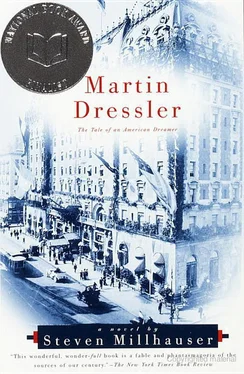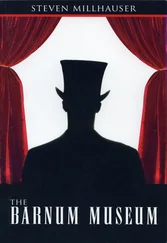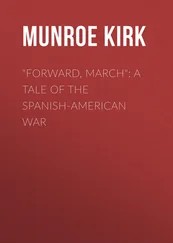From his lookout station on the roof garden of the New Dressler, Martin watched the skeleton of the new building rise, the Cosmo, the Grand Cosmo: steel beams held by wire cables at the ends of booms swung through the air, cutting torches flared, plumbers and electricians walked on the floors below the ironworkers, and far away Rudolf Arling had only to raise his eyes to see through his window the Brooklyn tower of the suspension bridge, while in another part of town Harwinton was planning a three-part campaign. At lunch Harwinton spoke of image clusters, groups of unrelated images that, presented together, took on special associations. Martin noticed that Harwinton never aged. In thirty years he would have that same look of a schoolboy with blond-lashed blue eyes and small neat teeth. His short straw-colored hair would turn gray so gradually that no one would notice. Omnirama, Cosmacropolis, Unispeculum, Cosmosarium, Stupendeum: he had proposed a long list of names, fretting over each in turn, until Martin woke in the night with the right name ringing in his mind. Consider the fountain pen, Harwinton said. A pretty woman bends over a sheet of paper, smiling as she writes with her fountain pen — all very elementary. Now consider the same woman sitting in a field of daisies. She smiles dreamily as she touches the cap of the pen to her cheek. In the background you see a steamer’s funnel, with white smoke puffs blown back against a blue sky. Instantly the pen is associated with the field and the ship, which is to say, with romance and adventure. Buy this pen and you buy love. Buy this pen and you buy life. For the Grand Cosmo he had prepared several sketches with image clusters designed to pique interest. The question at this stage was simply to prepare the public, to create expectation, for after all the Grand Cosmo was so all-embracing, so overwhelming, that one couldn’t present it all at once, like a safety razor or a dental cream. Martin looked through a number of sketches and stopped at one. In the foreground stood a skyscraper concealed by an immense white cloth. In the background, small but visible, rose an Egyptian pyramid, the Eiffel Tower, and one tower of the Brooklyn Bridge, draped in cables and suspenders. And Martin was startled: it was as if Harwinton had divined his love for the bridge, as if the image of the bridge suddenly bound him to Harwinton. Was it possible that even Harwinton felt the power of the bridge? But Harwinton, if he felt anything, felt it as a private citizen; as an advertising man he saw the world as a great blankness, a collection of meaningless signs into which he breathed meaning. Then you might say that Harwinton was God. That would explain why he never grew old. The thought interested Martin: he was having a ham sandwich and a cup of coffee with the Lord God, King of the Universe, a youthful American god with light blue eyes and blond lashes. But of course God could not believe in the Grand Cosmo, just as He could not believe in the universe, a blankness without meaning, except as it streamed from Him. For only human creatures believed in things: that much was clear.
As the Grand Cosmo rose to the thirtieth floor, as the steel skeleton began to disappear beneath its sheathing of rusticated stone, ads began to appear in newspapers and weekly magazines, showing the building with the cloth lifted to various heights; and around the half-concealed structure stood phrases such as THE GRAND COSMO: CULTURE, COMMERCE, AND COMMODIOUS LIVING.
The Grand Cosmo opened on September 5, 1905, five days after Martin’s thirty-third birthday; the delay was caused by a flaw in the refrigerated-air system, which circulated cool air through wall ducts on every floor and subterranean level. Martin, who had reserved ninety percent of the living quarters for permanent residents and ten percent for transients, noted that fewer than half of the spaces had been rented, but he was certain that the failure was due to the strangeness of the Grand Cosmo: people didn’t know exactly what it was. He had forbidden Harwinton to advertise it as a hotel; Harwinton had been forced to make use of teasing hints, such as THE GRAND COSMO: A NEW CONCEPT IN LIVING. The final stage of the campaign had emphasized the completeness of the Grand Cosmo, the sense that it was a world in itself, a city within the city. Harwinton, in his customary way, presented his central idea in a double manner that could only be called contradictory. For if on the one hand he made the claim that the Grand Cosmo, insofar as it contained everything the urban resident could possibly desire, was nothing less than the city itself, so that to dwell within its walls was to be, at every moment, at the very center of the city, yet on the other hand he emphasized that the Grand Cosmo was set apart from the city, he presented it as an exotic place that provided sensations unavailable to the mere city-dweller unfortunate enough not to enter its enchanted walls, he did everything in his power to turn the Grand Cosmo into an attraction, an eighth wonder of the world, a place you simply had to see. These two contradictory images of the Grand Cosmo, which at first threatened to lead the campaign into confusion, were brilliantly reconciled by Harwinton in a third image that began to emerge more strongly: the Grand Cosmo as a place that rendered the city unnecessary. For whether the Grand Cosmo was the city itself, or whether it was the place to which one longed to travel, it was a complete and self-sufficient world, in comparison with which the actual city was not simply inferior, but superfluous.
The newspaper reports were on the whole favorable, though Martin detected a frequent note of puzzlement or bewilderment: the critics, while admiring particular effects, seemed uncertain when the question arose of what exactly the Grand Cosmo was. Some called it a hotel; a few, taking a hint from the ad campaign, called it an experiment in communal living. What struck most of the first wave of observers was the overthrow of the conventional apartment. Instead the Grand Cosmo offered a variety of what it called “living areas,” in carefully designed settings. Thus on the eighteenth floor you stepped from the elevator into a densely wooded countryside with a scattering of rustic cottages, each with a small garden. The twenty-fourth floor contained walls of rugged rock pierced by caves, each well-furnished and supplied with up-to-date plumbing, steam, and refrigerated air. Those with a hankering after an old-fashioned hotel could find on the fourth and fifth subterranean levels, which formed a single floor, an entire Victorian resort hotel with turrets and flying flags, a grand veranda holding six hundred rattan rockers, and a path leading down through an ash grove to a beach of real sand beside a lake. Still other floors and levels offered a variety of living arrangements: courtyard dwellings (four to six irregular rooms arranged about a central court landscaped with trees and ponds), screen enclosures (large living areas supplied with folding screens that might be variously arranged to form temporary, continually changing divisions), and perspective views (room-like enclosures with windows that provided a three-dimensional view of a detailed scene resembling a museum diorama and supplied with live actors: a jungle with stuffed lions, a New England village with a blacksmith and a spreading oak tree, an urban avenue). In every case an attempt was made to abolish the corridor, to interrupt monotony, to overcome the sense of a series of more or less identical rooms arranged side by side in a rectangle of steel.
The theme of abolishing the expected was taken up by a number of writers, who reported that in order to avoid the tedium of a fixed architectural scheme, the Grand Cosmo employed a staff of designers, carpenters, landscape artists, and architectural assistants who roamed through the building and decided on changes: the removal of an inner wall, the construction of a new summerhouse or tunnel, the transformation of a cafeteria into an Italian garden or a croquet lawn into a street of shops. It was therefore possible to say that the Grand Cosmo was never the same from one day to the next, that its variety was, in a sense, limitless.
Читать дальше












